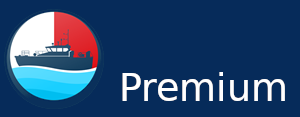Ship to ship tanker maneuvering operation, which take place while both ships are underway and in open sea circumstances, present a number of unique challenges in terms of collision that differ from conventional port berthing maneuvers. Given the flammable quality of the commodities transported and the limited access to emergency response vehicles owing to the operation's distance from the land, risk analysis of these berthing maneuvers is critical. Therefore, the fundamental purpose of this research is to conduct a probabilistic risk analysis of collision incidents by integrating fault tree analysis with bayesian network analysis using a fuzzy method. Initially, the fault tree analysis (FTA) was utilized to determine critical events and their logical structure. Expert opinion and fuzzy theory is used to deal effectively with uncertainty in probabilities of basic events. Considering the constraints of FTA in terms of conditional dependencies and static nature, a Bayesian network mapping from FTA is developed to overcome this limitation. BN is utilized to simulate the risk associated with the entire operating process by probability updating and sensitivity analysis. The results indicated that the “mooring line breakdown”, “main engine failure” and “steering system failure” root nodes are the most contributing factors to the STS collision accidents. The findings show that this research technique is realistic and reasonable, and makes an important contribution to the literature by combining FTA-BN as a dynamic risk assessment methodology to the improvement of STS operation.
Introduction
All cargo transfer operations between two vessels either by both vessels underway or one of the vessels anchored or moored to a buoy or a jetty, are considered ship to ship (STS) transfer operations at sea (ICS, O., CDI, S., 2013; Stavrou and Ventikos, 2016). Due to the limited number of deep-water ports and the increase in the number of deep-draft vessels (Zhuang and Su, 2015), there is an increase in the number of STS operations all of the time. Since the ships do not need to dock at the port, STS operations result in significant time savings as well as financial gains for the companies (Decker, 2006).
The main publication currently considered as the most important guideline on STS tanker transfer operations is the book "Ship to Ship Transfer Guide for Petroleum, Chemicals and Liquefied Gases" published by industry leaders Oil Companies International Marine Forum (OCIMF), Chemical Distribution Institute (CDI), International Chamber of Shipping (ICS) and Society of International Gas Tanker and Terminal Operators (SIGTTO). This book, which was first published in 1975, has been updated in the following years and has been used as the main source in previous studies published on STS tanker transfer operations with its last published version in 2013 (ICS, O., CDI, S., 2013). Despite a surge in published studies over the last few years, little emphasis has been dedicated to risk assessment of STS transfer operations.
Numerous studies in the simulator environment have been conducted to ascertain the hydrodynamic interactions between vessels during STS operations (Skejic and Faltinsen, 2007; Pedersen et al., 2008; Souza and Morishita, 2011; Lataire et al., 2011; Witkowska et al., 2017) and safety of the STS cargo transfer operations (Berg, 2007; Zhuang and Su, 2015; Stavrou and Ventikos, 2016; Husjord, 2016; Abramowicz-Gerigk et al., 2018; Sultana et al., 2019). Shimizu et al. (2010) analysed the black box (VDR) data of an aframax tanker, which was involved in ship-to-ship transfer operations in the United States between 2007-2009 and a guide and decision support system was tried to be created in order to increase operational safety. It was concluded that the relative distance between the ships is the most critical factor in STS approach maneuvers. Xiang et al. (2011) used three-dimensional potential flow theory to examine the hydrodynamic interactions between an aframax and a VLCC tanker during the STS transfer procedure. As a result of the experiments, it was concluded that the hydrodynamic interactions between the ships during the STS approach maneuvers should be carefully examined in order to prevent collision accidents. Arici et al. (2020) performed quantitative risk analysis of STS cargo transfer operations by consulting expert opinions together with Fault Tree Analysis (FTA) and Event Tree Analysis (ETA). Not to follow manoeuvring plan, not to take necessary action for interaction effect and lack of appropriate monitoring close quarter situation were determined as the most probable factors.
Statistics on the OSIS database reveal that a total of 3371 STS incidents have been reported in the last 36 months (OnlineSTS, 2021). The most common incident during STS operations is the collision accident, which occurs when the vessels approach each other for berthing (Witkowska et al., 2017; Abramowicz-Gerigk et al., 2018). To mitigate the likelihood of these occurrences, risk management must be carried out at an acceptable level due to the fact that risk assessments are critical for improving the protection of operations.
Different risk assessment methodologies have been developed and are now being utilized in the marine industry to carry out risk assessments (Khakzad et al., 2011). The FTA can provide an efficient method for revealing the causes of fault and dealing with the relationships between events. However, unlike Bayesian Network (BN), the FTA model is static and cannot be used to analyze dynamic systems. In order to overcome these drawbacks, FTA and BN are used together in the analysis of dynamic systems (Yanfu and Min, 2012; Kabir et al., 2019). As opposed to other risk evaluation methods, BNs are useful directed acyclic graph for making decisions in an uncertain environment since they are easy to understand. The likelihood of events may be updated using with new observations (Khakzad et al., 2011; Atoui et al, 2016). On the other hand, the amount of failure data available for risk analysis is frequently insufficient. Consulting expert opinions have emerged as a viable method for determining failure probability in the face of data uncertainty. To cope with uncertainties in unintentionally collected data, fuzzy sets and evidence theory were formulated to handle risk analysis uncertainties (Huang et al., 2001; Ferdous et al., 2013). It is a method widely used in network structures to seek expert opinions while determining failure probabilities of root causes due to insufficient literature, low reliability or bias (Druzdzel and Van de Gaag, 2013; Li et al., 2018).
This dynamic risk analysis model by integrating FTA and BN is commonly used in the maritime sector for risk assessments of incidents and other occurrences. Atehnjia et al. (2018) examine the detailed risk analysis for a specific shipyard dry dock gate by using FT-BN. Ren et al. (2020) suggested a fault diagnosis approach for lubrication systems of a diesel engine by integrating FT and BN. Yang and Sørensen (2020) developed FT-BN to assess the marine power transmission subsystem. Chen et al. (2015) used BN to FTA to conduct a risk assessment of maritime incidents in Shenzhen Waters. Li et al. (2018) presented a dynamic risk evaluation framework for third party damage on submarine pipelines by using FTA-BN. Jia et al. (2018) mapped an FTA to a BN in order to ascertain the collision's underlying reasons. To identify essential risk variables for ship fires, Wang et al. (2020) analysed the data using an FTA-BN technique. Sakar et al. (2021) applied BN to FTA to assess risk of grounding marine accidents. When fault tree analysis is used alone, it is insufficient in the analysis of dynamic systems, and although Bayesian networks have advantages in dealing with uncertain situations, scientific and rational modelling in practical applications includes some difficulties. In order to solve this problem, in this research Bayesian network integrated with fault tree analysis.
The purpose of this work is to develop a combined risk analysis model by using FTA and BN methods together in order to be able to dynamic risk analysis of collision accidents during underway STS berthing manoeuvres. By defining the relationships between events, FTA is used to create a graphical model of BN, and BN is used to model risk across the entire STS process. Basically, this study can give substantial assistance in making better decision by ship operators, masters and third parties related to STS operations.
The following sections of the study are laid out as follows: The material and methods Section 2 explain the fault tree analysis, bayesian networks, and integration of fault tree into bayesian network and fuzzy set theory briefly. Section 3 presents the proposed risk analysis methodology framework. Addressing basic event, fault tree modelling and nodes (basic event)’ probabilities estimation are provided in Section 4. Mapping from FT to BN, BN analysis with probability updating and sensitivity analysis, model validation and case study are shown in Section 5. In the conclusion section, presents the primary findings and their interpretation.


